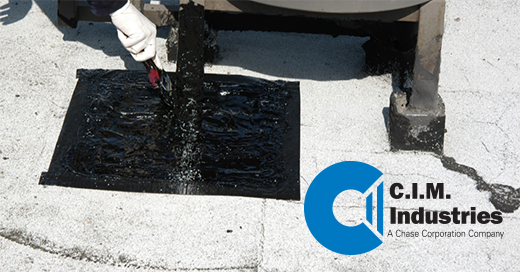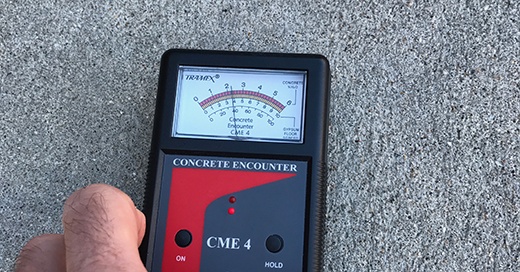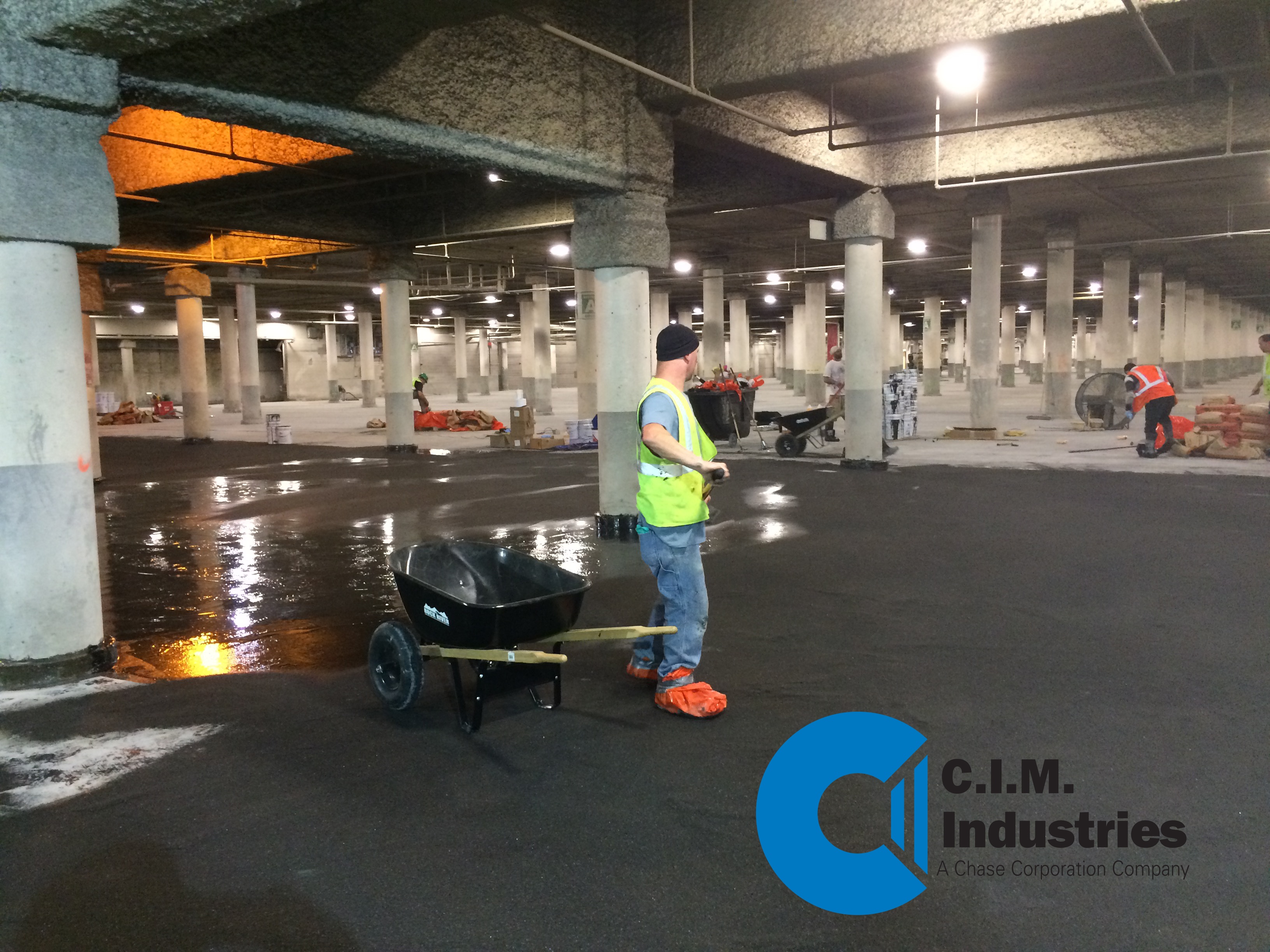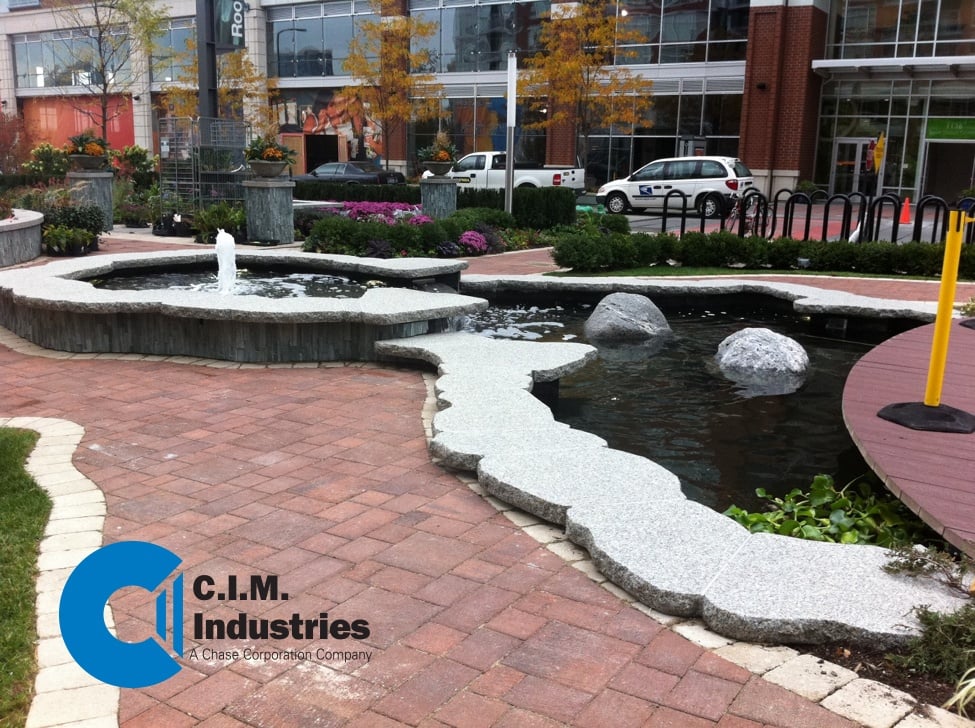Waterproofing membranes, waterproofing coatings, and waterproof linings are terms that can be applied to a wide range of products. They can be cold-applied liquid products, hot-applied products, peel-and-stick membranes or thermoplastic linings to name a few. All these products provide a good barrier to water when used under proper circumstances. So, why do so many installations leak?
Left image: reinforcing fabric installation on a roof
The presence of leaks can almost always be attributed to poor attention to the waterproofing details, including:










